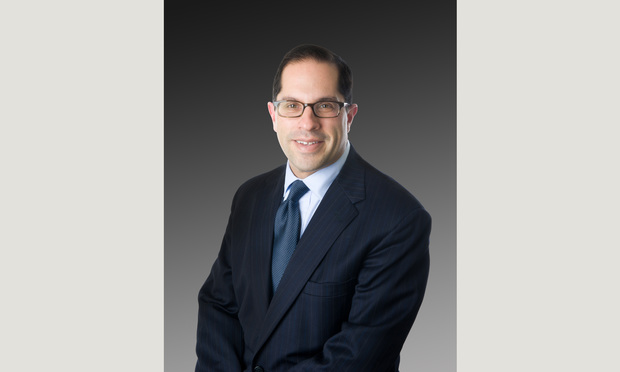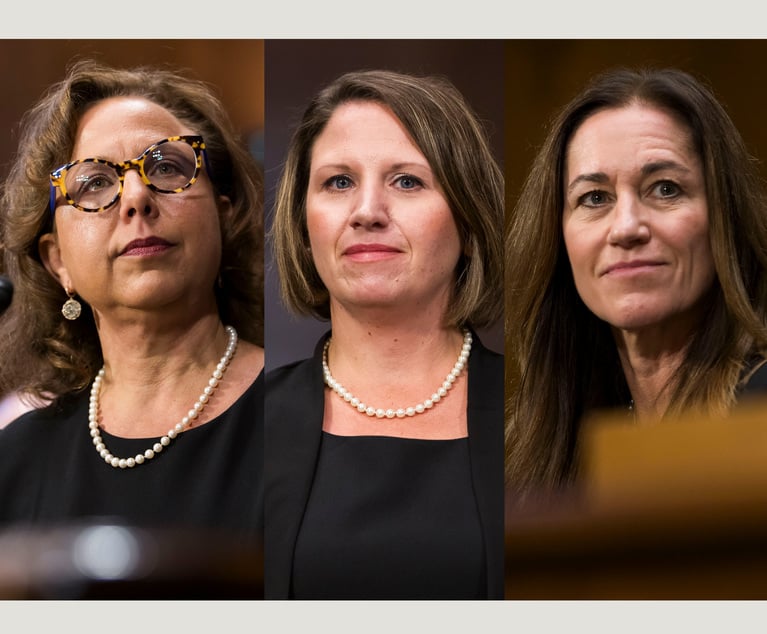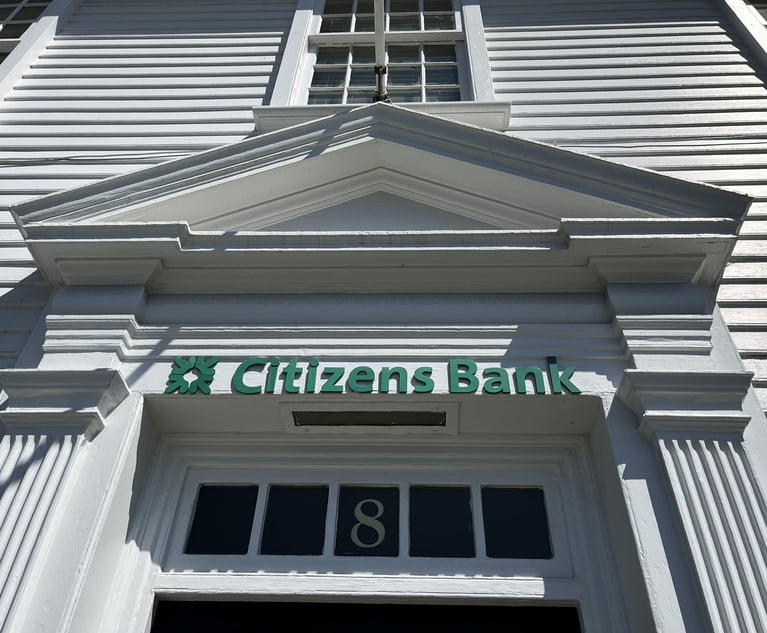Social Inflation's Impact on the Insurance Industry
In his 1977 Chairman's letter to stockholders, Berkshire Hathaway CEO Warren Buffett advised that costs in the insurance sector were expected to rise. One reason he offered was "social inflation" which he described as "a broadening definition by society and juries of what is covered by insurance policies."
March 23, 2020 at 12:46 PM
9 minute read
 Michael S. Olsan of White and Williams.
Michael S. Olsan of White and Williams.
In his 1977 Chairman's letter to stockholders, Berkshire Hathaway CEO Warren Buffett advised that costs in the insurance sector were expected to rise. One reason he offered was "social inflation," which he described as "a broadening definition by society and juries of what is covered by insurance policies." Then, in the mid-1980s, as asbestos suits proliferated, a top insurance executive bemoaned the then-current climate and commented, "The underlying and most dramatic cause of this insurance crisis is the wave of social inflation that has all but engulfed our system of jurisprudence … The mood of society is to seek a culprit for all of life's mishaps and to look to the insurance companies with the deep pockets to reward victims."
Today the term "social inflation" has re-emerged in the lexicon of insurance executives. The increase in the number of class actions, "nuclear" verdicts and new concepts in tort law is contributing to the current round of social inflation. Specific blame for this surge has been placed on various issues, including the #MeToo movement, increasing income inequality and litigation funding. While the rise in losses in the medical malpractice space is front and center in the social inflation phenomenon, the industry is also witnessing adverse impacts to directors' and officers' liability, excess liability and commercial auto. As to D&O specifically, there has been a doubling in the number of shareholder class actions in less than three years while the median settlement value of $13 million has remained relatively constant.
Nuclear Jury Verdicts
Some in the insurance industry and the defense bar use the term nuclear verdict to refer to those jury verdicts that are substantially higher than expected, generally more than $10 million. Some nuclear verdicts include an $8 billion verdict against Johnson & Johnson for Risperdal, a schizophrenia drug, a $2 billion verdict against Monsanto for its herbicide Roundup and another verdict against Johnson & Johnson for $4.7 billion related to its talcum powder products. Some other examples include the following:
- $1 billion related to workplace negligence against HACC Pointe South;
- $845 million arising out of intellectual property against XTAL;
- $383 million for medical malpractice against DaVita Healthcare Partners; and
- $242.1 million for products liability against Toyota Motor North America.
There are several reasons for these large verdicts, including reptile brain, corporate distrust, a changing concept of money and social media. Moreover, the increasing use of litigation funding may create an environment in which plaintiffs are more willing to take their cases to the jury.
The Reptile Brain
One reason for these large verdicts is the so-called "reptile" brain. This approach is a "strategy" some plaintiffs attorneys use to get jurors to access their "fight or flight" response. Utilizing this approach, a lawyer will make jurors feel so threatened by the defendant's behavior that they will lash out at the defendant, the predator. The goal is to make the jury feel angry toward the defendant, as opposed to sympathetic to the plaintiff, so they want to change the world and make things right.
Distrust of Corporate America
Today, there is a prevailing distrust of corporate America, particularly the pharmaceutical industry, contributing to a jury's desire to punish the defendant and reward the plaintiffs. Some have said that jurors no longer feel that large corporations are the "backbone of the economy" but rather they need to be punished for their wrongdoing. According to Kristin McMahon, chief claims officer, North American Specialty, Global Risk Solutions, Liberty Mutual Insurance, "Jurors are endorsing a political philosophy of 'populism,' supporting the rights and power of the people in their struggle against a privileged elite, which is how the defendants are often viewed."
The Changing Concept of Money
Jurors' concept of money has changed, leading them to feel relatively unrestrained in the awards they deliver. The public is frequently exposed to large dollar figures, whether in the form of box office hits, lottery jackpots or athlete salaries. If a corporation is a "bad actor" in the minds of the jury, as may be the case with catastrophic illness or injury, jurors do not hesitate to award sums of money that are often larger than expected. This phenomenon is exacerbated by the fact that plaintiffs' lawyers frequently use those large figures during the trial, when permitted. Even in those jurisdictions, like Pennsylvania, where a plaintiff cannot request a specific damages figure, attorneys use large numbers during the trial, citing for example, a company's net worth, or the profits from a particular product. By using stratospheric numbers, a plaintiff's lawyer de-sensitizes the jury to the point that it gains comfort in issuing a nuclear verdict. Further, there is some sentiment that jurors are increasing awards because they want to "be sure the injured are taken care of" to avoid simply over-compensating the plaintiffs' bar through contingent fees.
Social Media and the Millennial Generation
Social media and shorter attention spans may also play a role in larger jury verdicts. The "millennial" generation have a general mistrust of corporate America and the government. While there are 82 million millennials in the United States, McMahon cited one poll that suggested "only 19 percent agree that most people can be trusted." Through social media, the millennials "know how to leverage all of this information for a purpose … [which] can turn a small movement into a considerable force." Attention spans have also gotten shorter and are not conducive to lengthy medical and technical testimony and documentary evidence.
With social cause cases, like those associated with the opioid crisis, the #MeToo movement, vaping, and global warming, on the rise, opportunities for juries to punish corporate America will not decrease anytime soon. The defense, together with the insurance industry, needs to find ways to combat the stratospheric figures the plaintiffs bar is putting before juries. Use of mock juries, realistic dollar figures for the jury to consider and greater use of graphic and visual aids during a trial may be a start in the right direction.
Impact of Social Inflation on the Insurance Industry
The insurance industry has cited social inflation as a reason for the recent financial difficulties it is facing. For example, AXA XL reduced its earnings projections and stated, "claims have since come in higher and faster than anticipated." In late October 2019, Travelers increased its reserves by hundreds of millions of dollars in its quarterly earnings report. Explaining the reason, Alan Schnitzer, Chief Executive Officer, referenced a "challenging level of social inflation." Concurring in this sentiment is fellow executive, W. Robert Berkley Jr., chief executive of W.R. Berkley Corp., who told analysts "Social inflation is real. It is here, and the industry is beginning to pay attention."
The insurance industry is in a hardening market with commercial policy pricing rising close to 6% in Q2 2019. According to Marsh's Global Insurance Market Index, this was the seventh consecutive quarter that saw premium increases. Offsetting the rise in rates, however, is an increase in losses, including those resulting from social inflation. Investors' anxiety about the industry, as a result of social inflation's impact, became evident in 2019. According to the Wall Street Journal, for the fourth quarter of 2019, S&P 500, multi-line insurers were down 3% compared with a gain of 12% overall in the financial sector.
While the industry has faced societal factors in the past, Mike Hudzik, Swiss Re's head of casualty underwriting for the U.S. and Canada, "believes the industry may be quicker to react than in past tough cycles with better risk assessment and information availability." He continued, however, there would need to be several years of improved pricing "just to fill the hole that exists from under-reserving, as well as the additional impact of social inflation." According to Hudzik, rates have risen anywhere from the high teens for excess liability policies to as much as 75% on "certain loss-impacted accounts." In addition to the higher pricing, some insurers have reduced or eliminated their exposure in certain sectors like truck fleets where there have been an increased number of nuclear verdicts.
Concluding Thoughts
To do its part in reducing the impact of social inflation, the insurance industry should undertake several measures, such as the following: make sure that it stays on top of trends affecting underlying litigation (regardless of the sector or industry); collect data to facilitate its decision making on individual losses or portfolios of cases; partner with policyholders and defense counsel to change the views of, and further educate, the jury and the claimants; and recruit the next generation of talent, which is more representative of the growing, diverse population like the jury pools that policyholders are facing, to provide strategic input. For its part, the defense bar needs to examine new strategies for settlement and trial, when the latter is necessary. For example, plaintiffs are no longer averse to putting stratospheric numbers before the jury. However, the defense bar continues to avoid placing some alternative figures for the jury to consider. If the jury wants to punish the defendant, but all it has is the plaintiff's damages figure, it may be more apt to award an amount in that range. Further, greater use of mock juries and the presentation of evidence in a way the millennial generation prefers may help move the needle.
In an ironic twist, the consumer—some of whom may very well be jurors—may become the victim as a result of the nuclear verdicts some juries are awarding. As insurers are required to pay higher and higher jury verdicts, they will raise their pricing accordingly. To the extent corporate policyholders, like product manufacturers, have to pay higher premiums, will those costs be passed on to the consumer? If so, perhaps the jurors will begin to see the light and bring their awards back to reality.
Michael S. Olsan is a partner at White and Williams and chair of the commercial litigation department. He represents clients in the insurance industry in insurance coverage and reinsurance matters.
This content has been archived. It is available through our partners, LexisNexis® and Bloomberg Law.
To view this content, please continue to their sites.
Not a Lexis Subscriber?
Subscribe Now
Not a Bloomberg Law Subscriber?
Subscribe Now
NOT FOR REPRINT
© 2025 ALM Global, LLC, All Rights Reserved. Request academic re-use from www.copyright.com. All other uses, submit a request to [email protected]. For more information visit Asset & Logo Licensing.
You Might Like
View All
Pa. Federal District Courts Reach Full Complement Following Latest Confirmation

The Defense Bar Is Feeling the Strain: Busy Med Mal Trial Schedules Might Be Phila.'s 'New Normal'
7 minute read
Federal Judge Allows Elderly Woman's Consumer Protection Suit to Proceed Against Citizens Bank
5 minute read
Judge Leaves Statute of Limitations Question in Injury Crash Suit for a Jury
4 minute readLaw Firms Mentioned
Trending Stories
- 1States Accuse Trump of Thwarting Court's Funding Restoration Order
- 2Microsoft Becomes Latest Tech Company to Face Claims of Stealing Marketing Commissions From Influencers
- 3Coral Gables Attorney Busted for Stalking Lawyer
- 4Trump's DOJ Delays Releasing Jan. 6 FBI Agents List Under Consent Order
- 5Securities Report Says That 2024 Settlements Passed a Total of $5.2B
Who Got The Work
J. Brugh Lower of Gibbons has entered an appearance for industrial equipment supplier Devco Corporation in a pending trademark infringement lawsuit. The suit, accusing the defendant of selling knock-off Graco products, was filed Dec. 18 in New Jersey District Court by Rivkin Radler on behalf of Graco Inc. and Graco Minnesota. The case, assigned to U.S. District Judge Zahid N. Quraishi, is 3:24-cv-11294, Graco Inc. et al v. Devco Corporation.
Who Got The Work
Rebecca Maller-Stein and Kent A. Yalowitz of Arnold & Porter Kaye Scholer have entered their appearances for Hanaco Venture Capital and its executives, Lior Prosor and David Frankel, in a pending securities lawsuit. The action, filed on Dec. 24 in New York Southern District Court by Zell, Aron & Co. on behalf of Goldeneye Advisors, accuses the defendants of negligently and fraudulently managing the plaintiff's $1 million investment. The case, assigned to U.S. District Judge Vernon S. Broderick, is 1:24-cv-09918, Goldeneye Advisors, LLC v. Hanaco Venture Capital, Ltd. et al.
Who Got The Work
Attorneys from A&O Shearman has stepped in as defense counsel for Toronto-Dominion Bank and other defendants in a pending securities class action. The suit, filed Dec. 11 in New York Southern District Court by Bleichmar Fonti & Auld, accuses the defendants of concealing the bank's 'pervasive' deficiencies in regards to its compliance with the Bank Secrecy Act and the quality of its anti-money laundering controls. The case, assigned to U.S. District Judge Arun Subramanian, is 1:24-cv-09445, Gonzalez v. The Toronto-Dominion Bank et al.
Who Got The Work
Crown Castle International, a Pennsylvania company providing shared communications infrastructure, has turned to Luke D. Wolf of Gordon Rees Scully Mansukhani to fend off a pending breach-of-contract lawsuit. The court action, filed Nov. 25 in Michigan Eastern District Court by Hooper Hathaway PC on behalf of The Town Residences LLC, accuses Crown Castle of failing to transfer approximately $30,000 in utility payments from T-Mobile in breach of a roof-top lease and assignment agreement. The case, assigned to U.S. District Judge Susan K. Declercq, is 2:24-cv-13131, The Town Residences LLC v. T-Mobile US, Inc. et al.
Who Got The Work
Wilfred P. Coronato and Daniel M. Schwartz of McCarter & English have stepped in as defense counsel to Electrolux Home Products Inc. in a pending product liability lawsuit. The court action, filed Nov. 26 in New York Eastern District Court by Poulos Lopiccolo PC and Nagel Rice LLP on behalf of David Stern, alleges that the defendant's refrigerators’ drawers and shelving repeatedly break and fall apart within months after purchase. The case, assigned to U.S. District Judge Joan M. Azrack, is 2:24-cv-08204, Stern v. Electrolux Home Products, Inc.
Featured Firms
Law Offices of Gary Martin Hays & Associates, P.C.
(470) 294-1674
Law Offices of Mark E. Salomone
(857) 444-6468
Smith & Hassler
(713) 739-1250





